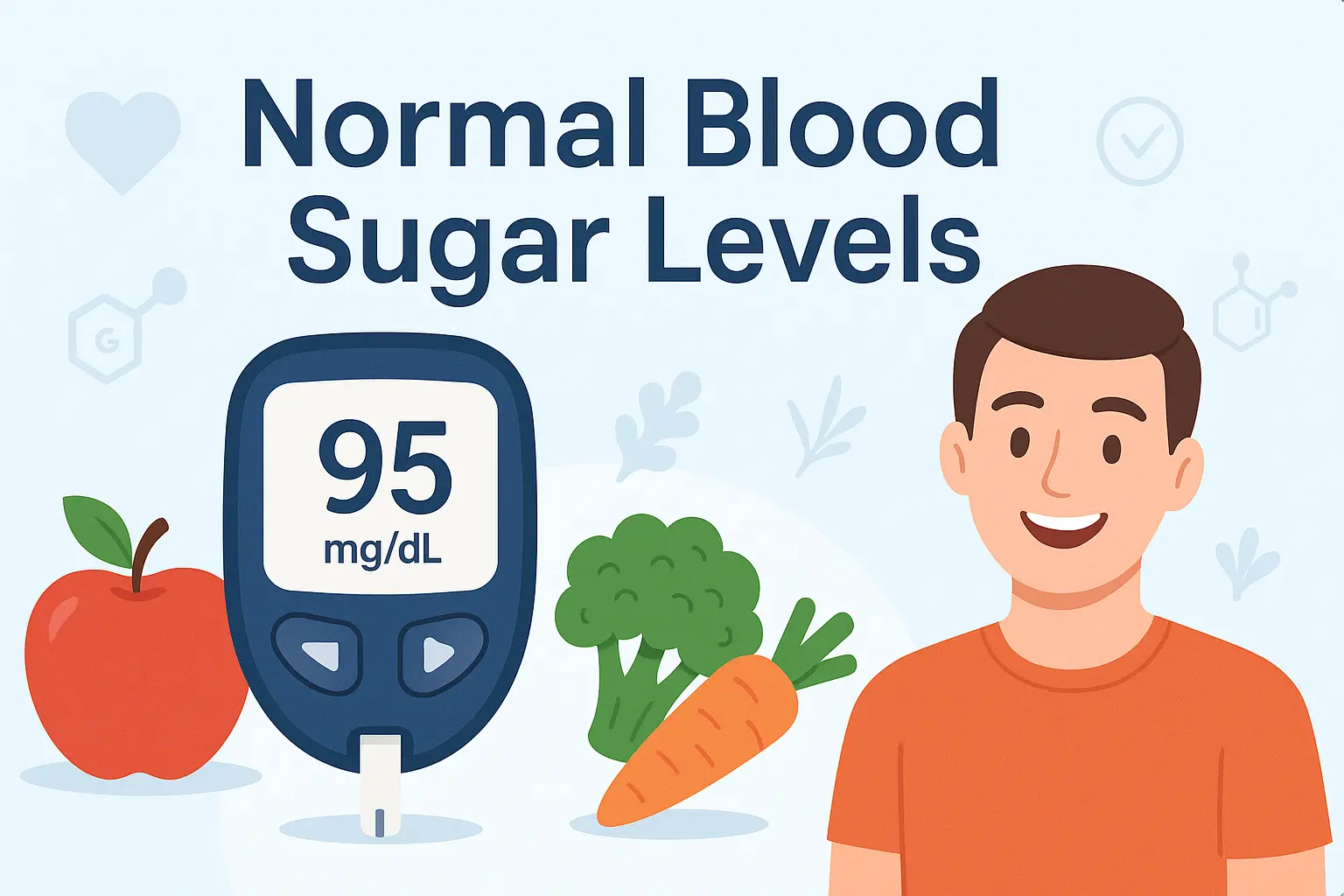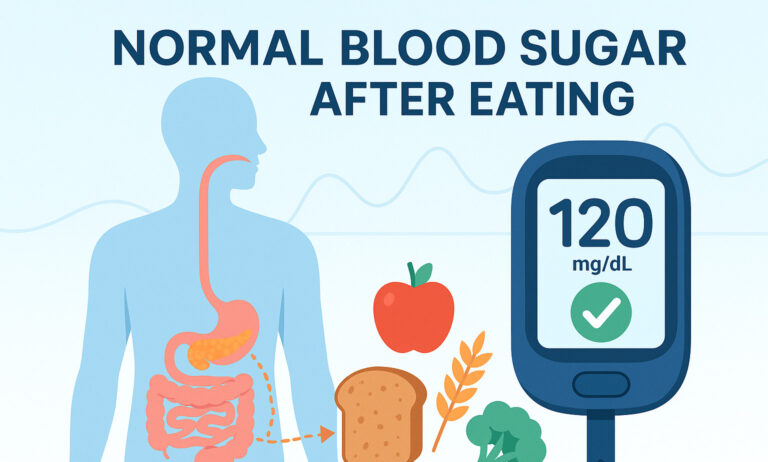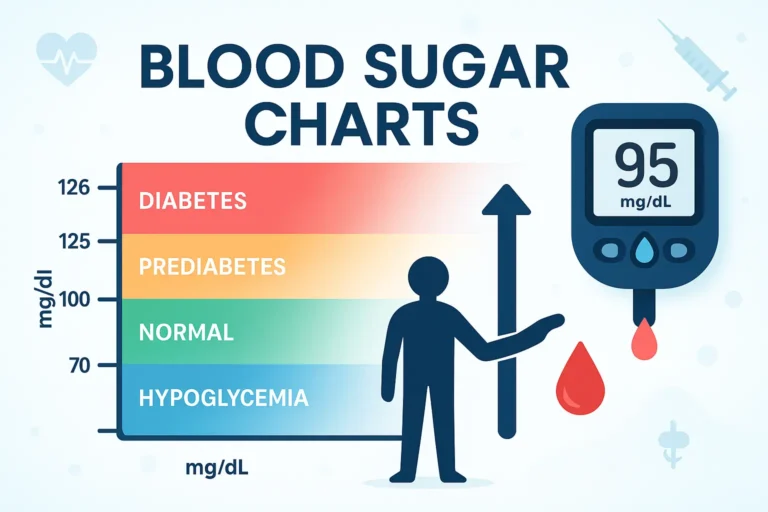What Are Normal Blood Sugar Levels? Find Out Here!
If you have ever wondered about normal blood sugar levels, you are definitely not alone. Understanding these numbers can help you spot patterns, take preventive steps, and feel more confident in managing your day-to-day health. Whether you have diabetes or you are simply aiming to stay healthy, a few clear guidelines go a long way.
Know Normal Blood Sugar Levels
Sugar, or glucose, is your body’s primary energy source. When you eat carbs (bread, fruit, pasta), your blood sugar naturally rises, triggering your body to release insulin so your cells can absorb that sugar for energy. In someone without diabetes, fasting blood sugar (before breakfast) is typically below 100 mg/dL. Post-meal levels usually remain under 140 mg/dL in healthy individuals after about two hours (Cleveland Clinic).
Below is a quick snapshot of fasting and after-meal readings. Always remember that your ideal targets may vary based on age, overall health, and any other conditions.
| Measurement | Normal (No Diabetes) | Prediabetes | Diabetes |
|---|---|---|---|
| Fasting (mg/dL) | < 100 | 100–125 | ≥ 126 |
| Post-Meal (1–2 Hours) (mg/dL) | < 140 | 140–199 | ≥ 200 |
Want more details on analyzing these numbers? Check out these blood sugar charts.
Track Your Readings Regularly
Monitoring your glucose is one of the best moves you can make. For many, a simple blood glucose meter or a continuous glucose monitor (CGM) helps provide real-time data on your current levels.
- Test at different times: fasting, before meals, and two hours after meals.
- Jot down results in a journal or app to detect trends over time.
- Aim for an A1C test at least twice a year. This average over 2–3 months helps you see if your daily checks align with overall control (National Library of Medicine).
When checking after you eat, comparing your post-meal blood sugar levels can offer insights on how different meals affect you.
Recognize High And Low Levels
It is normal for blood sugar to shift throughout the day. However, repeated very high or very low readings can be risky. Hyperglycemia (high blood sugar) often appears when levels climb above 180 mg/dL for someone with diabetes. Hypoglycemia (low blood sugar) usually means levels fall under 70 mg/dL (Cleveland Clinic).
Typical signals of high blood sugar include:
- Excessive thirst or hunger
- Frequent urination
- Blurry vision or fatigue
Common signs of low blood sugar include:
- Shakiness or sweating
- Sudden weakness or confusion
- Fast heartbeat
If you want more specifics, scanning a list of high and low blood sugar symptoms can help you catch problems early.
Balance Blood Sugar with Diet And Exercise
A balanced meal plan is key to keeping your blood sugar steady. Focus on proteins, healthy fats, and high-fiber carbohydrates. For instance, berries, leafy greens, and whole grains digest more slowly, which helps even out glucose spikes (Mass General Brigham).
- Fill half your plate with non-starchy veggies like spinach or kale.
- Choose lean proteins, such as chicken or fish, alongside your carbs.
- Go for a short walk, about 15 minutes, after a meal. Studies show this can significantly reduce post-meal spikes (Baylor Scott & White Health).
Physical activity also helps your muscles use glucose more effectively. Whether it is yoga, brisk walking, or light strength training, even a small daily routine can boost your blood sugar management goals.
Check In With Your Healthcare Team
If you notice constant highs or lows, it is important to speak with a medical professional. They may adjust your medication, suggest a new meal plan, or run tests to identify underlying issues. For individuals with diabetes, periodic consultations help verify if your A1C is below a target level (often 7% for many) and gauge any potential complications (Cleveland Clinic).
Key Takeaways For Steady Levels
- Normal blood sugar levels generally sit below 100 mg/dL when fasting.
- Testing at different intervals highlights how meals, stress, or exercise affect you.
- Recognizing spikes and drops early can reduce long-term risks.
- Balanced meals and short post-meal walks are simple ways to keep levels in check.
- Keep in touch with your health team for regular evaluations.
Try one small change today, like adding a quick walk after lunch or swapping refined carbs for whole grains. You might be surprised how much difference it makes in your daily numbers. If you have a favorite tip, share it with others, and keep experimenting until you find the methods that work best for you. Remember, consistency is your ally when it comes to stable blood sugar and a healthier life overall.








Leave a Reply